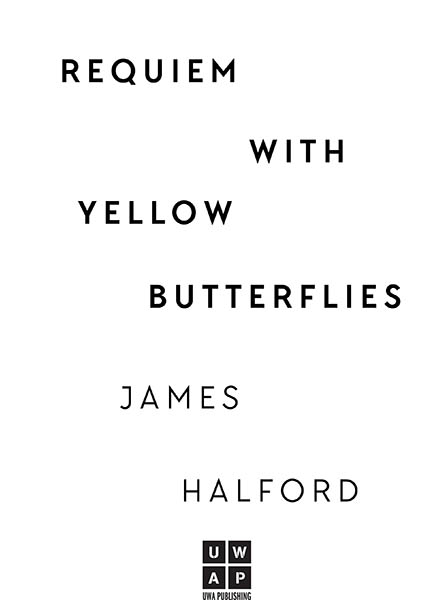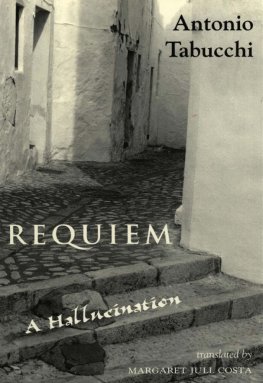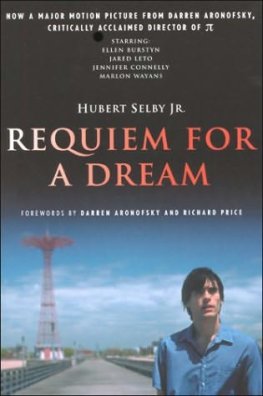Praise forRequiem with Yellow Butterflies
Australia and Latin America enter into a mutually illuminating dialogue in Halfords travel essays, with their engagingly unheroic protagonist.
J.M. COETZEE
Literary in the best sense of the word attentive to place, inventive in its descriptions and bold in its disclosures.
GAIL JONES
At its heart, Requiem with Yellow Butterflies is a deeply loving portrait of South America, and of the often unexpected currents that flow from its shores to our own. James is a writer who wants to hear and to learn, and so inevitably his travels bring him closer to the lives of the continents many brilliant writers and the extraordinary cultures that produced them. He collects their stories, and along the way seeks out the first steps of his own as a writer, traveller, husband and father.
KRI GSLASON

ABOUT THE AUTHOR
James Halford is a Brisbane writer who has spent extended periods in Latin America and often writes about the region. His fiction, creative nonfiction and criticism have been published in Best Australian Stories, Meanjin and Sydney Review of Books. He holds a literature degree and a creative doctorate from the University of Queensland, where he now teaches, and has studied Spanish in Argentina, Mexico and Spain.

First published in 2019 by
UWA Publishing
Crawley, Western Australia 6009
www.uwap.uwa.edu.au
UWAP is an imprint of UWA Publishing, a division of The University of Western Australia.

This book is copyright. Apart from any fair dealing for the purpose of private study, research, criticism or review, as permitted under the Copyright Act 1968, no part may be reproduced by any process without written permission. Enquiries should be made to the publisher.
Copyright James Halford 2019
The moral right of the author has been asserted.
ISBN: 978-1-76080-061-1 (epub)
978-1-76080-062-8 (ePDF)

A catalogue record for this book is available from the National Library of Australia
The epigram on p. vii is from F. Nietzsche in E. Bertram, Nietzsche: Attempt at a Mythology, R. E. Norton (trans.), University of Illinois Press, Chicago, 2009, p. 220.
Cover design by Alissa Dinallo
Cover image by Shutterstock
Typeset in 11 pt Bembo by Lasertype

Contents
To rediscover the South in oneself
Nietzsche
Requiem with Yellow Butterflies
a feeling as primitive and as simple as that of love.
Gabriel Garca Mrquez
In faraway Brisbane, news reached me within an hour.
Gabo died today, said a familiar female voice down the line. I thought youd want to know.
It had been more than a year since we were in touch.
R, is that you?
Se muri en su casa en Mxico.
Thats sad.
She seemed to be calling from her Skype account; my office phone didnt recognise the number.
Where are you?
Theyre leaving flowers and books and paper butterflies outside his house. He died of pneumonia.
Youre outside his house?
I whispered to avoid annoying my work colleagues. Aside from fingers punching keys, the office was silent. It was ten oclock on Friday morning in Australia, Thursday evening in Mexico.
Do you remember the yellow butterflies? she said.
Im not sure.
Ive tried and tried, but I cant remember that part. Anyway, people are hanging strings of them outside his house.
I dimly recalled an image of butterflies fluttering over a couple making love in the bath. But my clearest memories of One Hundred Years of Solitude were of us. Wed read it together across a year of long, lazy Sunday morning sessions in bed, sunlight streaming through the window of our sixth-floor apartment by the muddy Brisbane River. Id read the novel aloud for her, cover to cover, in the hard-won, mongrel Spanish Id learned over years travelling and working in Latin America, while she corrected my pronunciation and patiently explained every unfamiliar word (el revoloteo de una mariposa). That was her fifth year in Australia, her third living with me, and we both knew there would be no further extensions to her PhD scholarship. A few months after we finished reading Cien aos de soledad she submitted her thesis. The conditions of her Mexican scholarship required her to return home and work for a year. We discussed me quitting my day job to follow her:
We could go back to Oaxaca in the new year, she said. To that village in the sierra with the beautiful little chapel.
Its too soon. Ive told you.
The day of her flight, we lingered on the boardwalk in the Botanic Gardens until the tide exposed the mangroves below. They have a word in Mexico for an embrace so tight it hurts: un abrazo rompecostillas, a rib-cracker.
I remember a lot of things, I said. But I dont remember the butterflies.
After Garca Mrquez died, I found myself emailing and chatting with R nearly every day. We sent each other links to articles about him as a pretext, but we both knew what was really happening. Once we started looking, we found yellow butterflies in nearly all the memorials around the world, but never any explanation of their significance or where theyd appeared in the novel. Our Spanish Royal Academy fortieth-anniversary edition of One Hundred Years of Solitude was still on my bookshelf. But the thought of opening its dark-green cover pained me. We promised that somewhere in the world, at some unspecified point in time, wed sit together with our old copy of the book and go butterfly hunting. For now, she wouldnt even tell me where she was living, or where shed found work.
No importa. You made your choice. You decided not to come.
As I read the memorials from around the world, a spark of curiosity kindled. I was struck by how little impact academic critiques of authorship have made on popular portrayals of it. Since the 1960s, much professional criticism has emphasised readers interpretive freedom and down-played authorial intention. Yet nearly all the coverage of Gabos death, even in the quality press, returned to good old-fashioned biographical criticism, reinscribing the myth of the author-genius. Much of it described him as a universal writer and his work as universal literature, without seriously considering what these categories mean or how they are constructed. The popular press focused on Garca Mrquez as a global brand name and commodity whose prestige derived from the marketplace more than 25 million copies of One Hundred Years of Solitude sold in over 30 languages and from famous, powerful admirers like Bill Clinton, King Juan Carlos of Spain, and Fidel Castro.
When I started reading the obituaries for Gabo at the local, national, Latin American and international levels, I found something quite different. I encountered a series of culturally particular and contested versions of Gabo/Garca Mrquez. In Colombia, his death occasioned soul-searching about negative perceptions of the country internationally; in Mexico, he was celebrated as an immigrant success story someone who had made a better life in their country for a change; in Spain, at a moment of profound cultural pessimism sparked by the economy, the death of the new Cervantes became an elegy for the illustrious Hispanic past. Meanwhile, in the English-speaking world, especially the USA, the obituaries played out a range of stereotypes, fantasies and fears about Latin America that have lingered since the end of the Cold War.
Next page

















